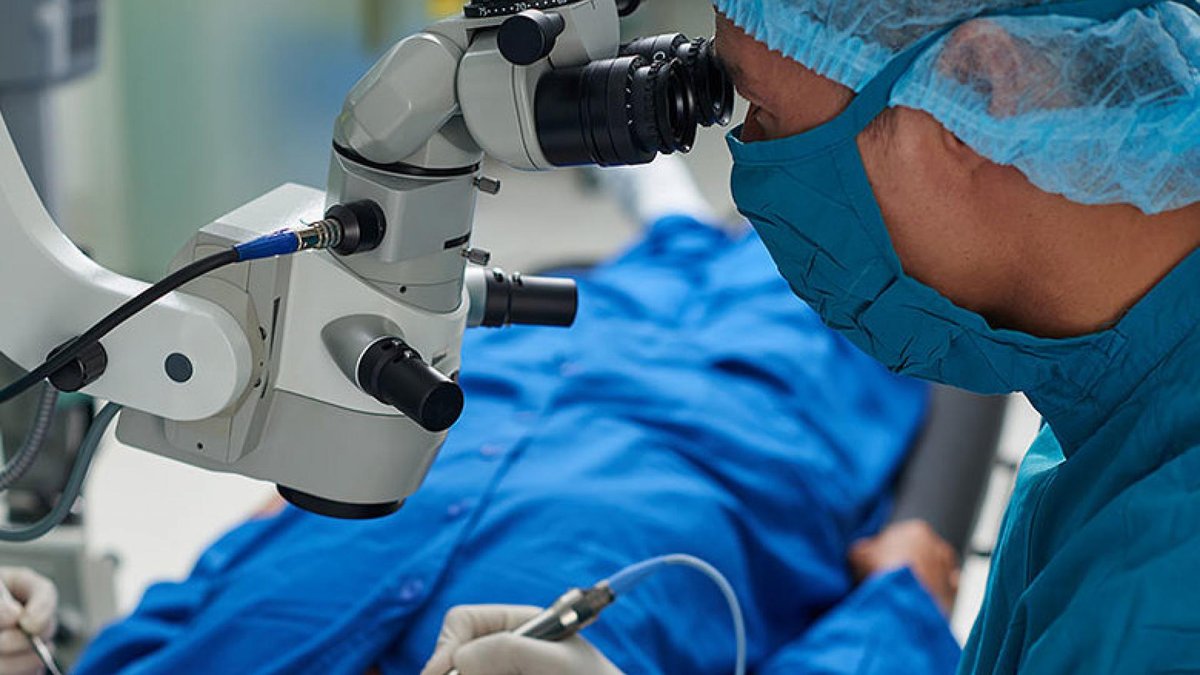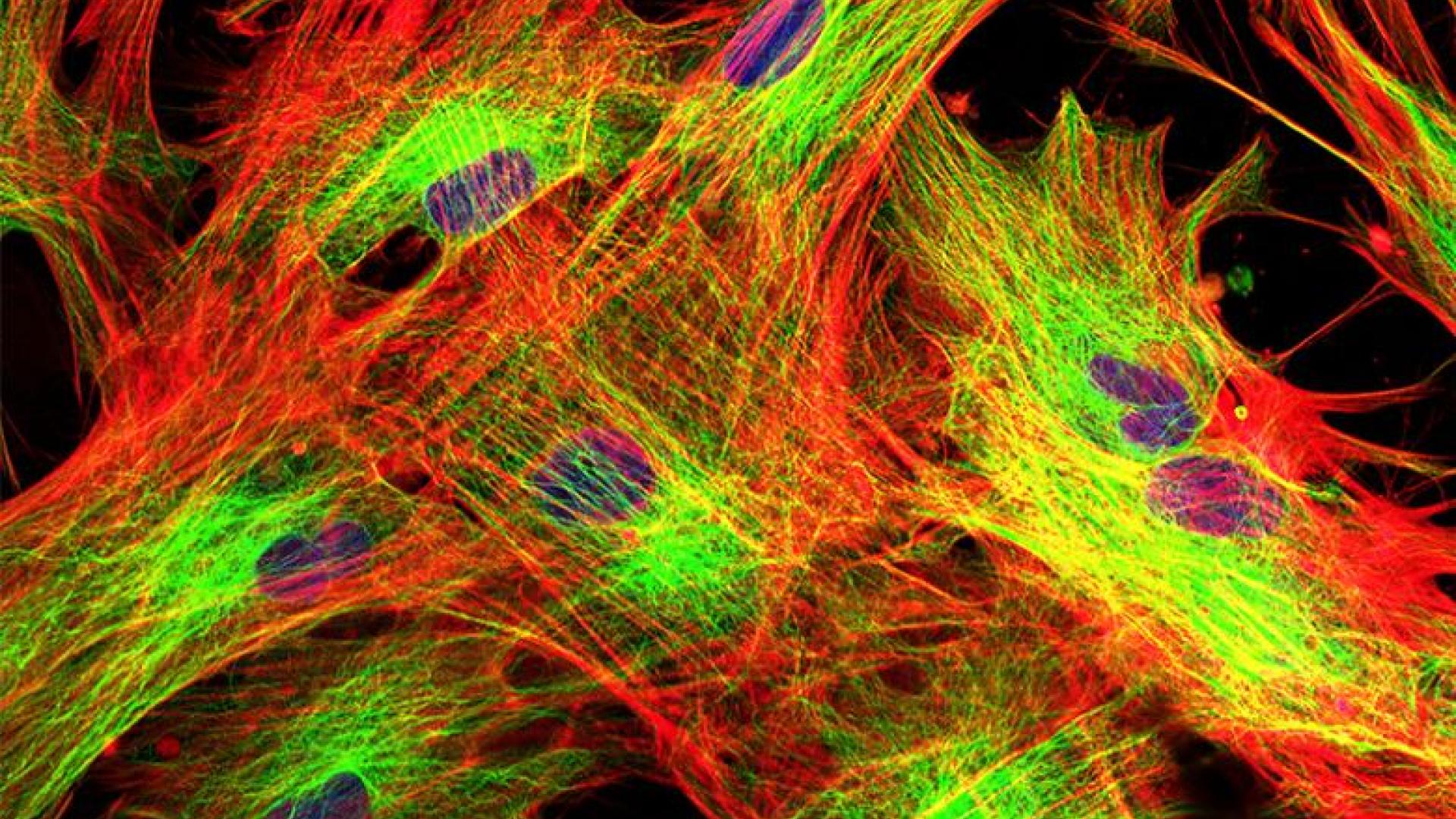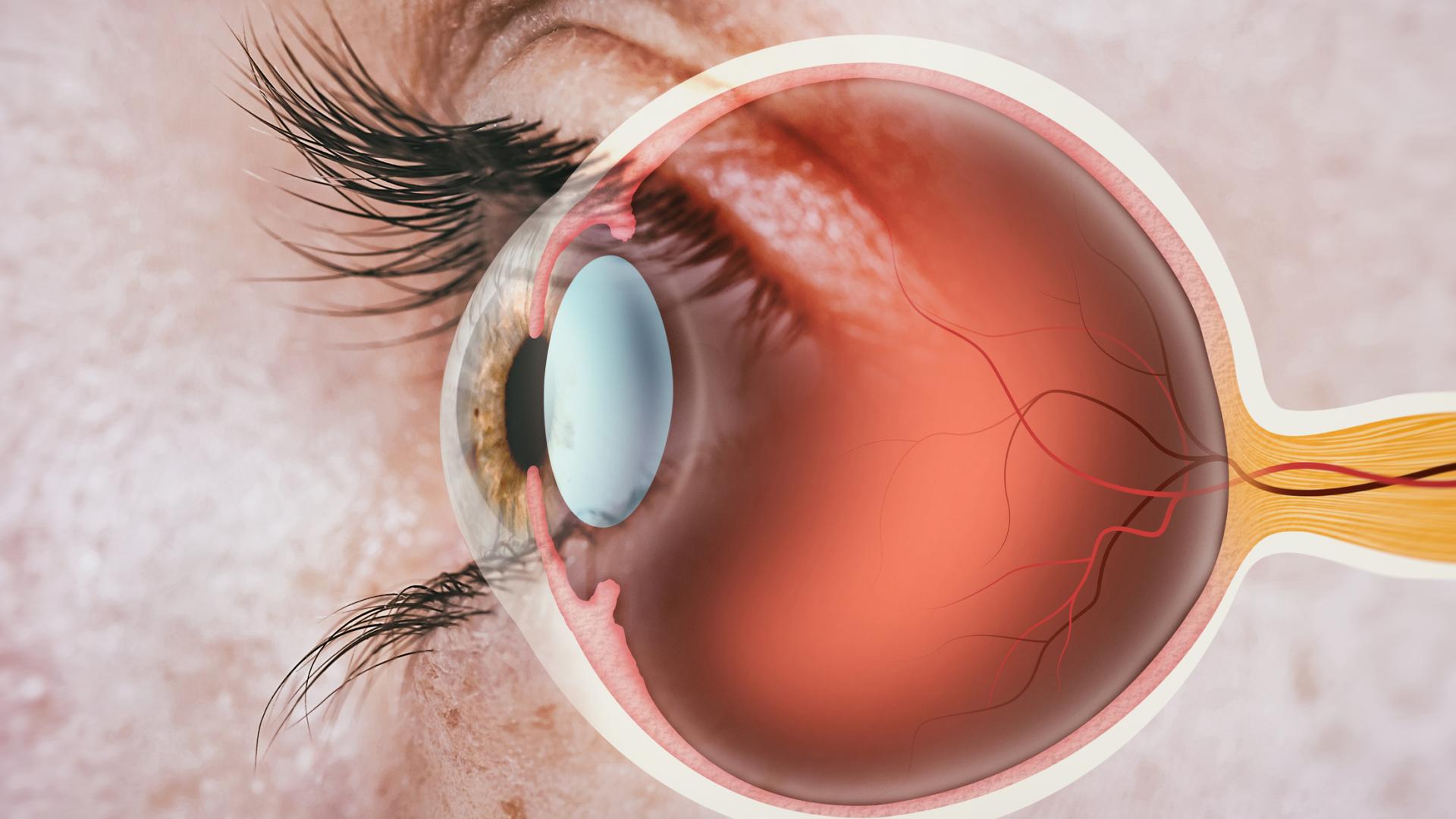
Trabeculectomy is a surgical procedure for lowering pressure inside the eye. Learn about this procedure, potential side effects, how scarring is managed, and the factors that influence the success of the treatment.
What is Trabeculectomy Surgery for Glaucoma?
Trabeculectomy is a standard surgery for glaucoma that lowers pressure inside the eye when medical treatments or laser surgery have failed to bring the eye pressure low enough. In this operation, a small hole is made in the wall of the eye, and a “trapdoor” or “flap” is created over this hole to allow fluid to escape the eye in a controlled fashion. The fluid is shunted from inside the eye, bypassing the obstructed trabecular meshwork, through the small hole and “trapdoor,” while remaining underneath the outer clear membrane of the eye (conjunctiva). This forms a small blister or “bleb” underneath the upper eyelid. Normally, no one will be able to see the “bleb” just by looking at the eyes.
Trabeculectomy is a very delicate operation that requires an operating room, local anesthesia of the eye, an anesthesiologist, and about an hour of operating time. It is successful about 60-80 percent of the time in controlling the eye pressure during a period of five years.
After the surgery, patients will typically stop using any glaucoma medications that were previously prescribed, and then begin a regimen of antibiotic and steroid eye drops to prevent infection and control inflammation. When successful, trabeculectomy is very effective at lowering eye pressure and is considered one of our “gold standard” procedures, especially for patients with moderate to advanced glaucoma.
Video Animation: Trabeculectomy Procedure
Managing Scarring of the Bleb
Often, the “trapdoor” or “bleb” may scar over as part of the body’s natural healing process. Eye doctors often use anti-scarring medications, such as Mitomycin-C or 5-fluorouracil, at the time of surgery to try and prevent this problem, but sometimes it still occurs. Often, eye doctors will inject these medications after the surgery during an office visit to help control the scarring process.
Young people, certain racial groups, and those with glaucoma due to trauma or inflammation are particularly prone to this scarring problem. If scarring is observed, physicians can try to break up the scar tissue with an in-office procedure, a type of “bleb revision.” On rare occasions, the procedure may need to be repeated or additional types of surgery including a more extensive bleb revision in the operating room are required.
Trabeculectomy Success Factors
The success of trabeculectomy depends not only on the surgery itself, but possibly even more importantly on the frequent follow-up visits for medication and “bleb” management. In addition to the anti-scarring medications that may need to be injected (discussed above), there are other methods that are sometimes used in the clinic after the surgery. For example, the doctor may suture the “trapdoor” (but not completely shut so as to allow the eye fluid to escape), and occasionally the sutures are cut during an office visit using a laser, allowing more fluid to escape. Alternatively, the surgeon can “release” the sutures by pulling at them carefully if a type of “releasable suture” is used. Finally, your surgeon may instruct you to do a type of “eye massage” to keep the flow going and the bleb well-formed.
Trabeculectomy Recovery and Side Effects
Unlike most laser treatment where the eye recovers very quickly, it can take anywhere from two to six weeks for the eye to recover from a trabeculectomy. Although it is very unusual, serious complications can occur, including infection in the eye, bleeding inside the eye, loss of vision, and eye pressure that is too low. Therefore, this operation is reserved for eyes that have not responded adequately to medical, laser surgery, or other less invasive types of surgery. Other rare side effects include the “bleb” becoming large enough to be noticeable or cause discomfort, but there are ways to manage these developments. The anti-scarring medications can increase risk for an eye infection, even many years after the surgery. Therefore, if patients notice discomfort, abnormal tearing, pus-like discharge, or increasing redness, even years after the surgery, they should call the office right away rather than waiting. An infection caught early can be treated and vision preserved, whereas an infection caught late may result in significant vision loss.
A more common side effect of trabeculectomy is acceleration of cataract formation. However, this is reversible, as cataract surgery can be performed at a later date. Alternatively, some surgeons will perform cataract surgery at the same time as the trabeculectomy, although this has been shown to result in lower success rates for the trabeculectomy.
Creating a Bleb with an EX-PRESS Shunt
One variation of trabeculectomy is trabeculectomy performed with the addition of an EX-PRESS shunt. This is a small metal shunt that is inserted into the eye wall to allow fluid to drain from the inside of the eye and underneath the “trapdoor,” thus creating a “bleb.” In essence, one can think of it as a precise way of creating the small hole in the eye wall that is typically fashioned “by hand” or using an instrument in standard trabeculectomy (see first paragraph). The metal shunt does not affect MRI scans or airport security.
Advantages of the Shunt
There are several advantages of the shunt, including some studies showing faster vision recovery and less inflammation inside the eye after surgery.
Disadvantages of the Shunt
The disadvantages of using the EX-PRESS shunt include the possibility of needing to remove it if a bad infection were to occur, cost depending on the insurance carrier, and having an additional piece of hardware inside the eye, which some patients do not want. If the shunt is not placed in the proper position, there can be long-term damage to the cornea, the clear window portion of the eye.
Some surgeons prefer standard trabeculectomy and others prefer the trabeculectomy with EX-PRESS shunt, so it is important for patients to talk with their surgeon about these options to decide what is best for their particular situation.
About BrightFocus Foundation
BrightFocus Foundation is a premier global nonprofit funder of research to defeat Alzheimer’s, macular degeneration, and glaucoma. Since its inception more than 50 years ago, BrightFocus and its flagship research programs—Alzheimer’s Disease Research, Macular Degeneration Research, and National Glaucoma Research—has awarded more than $300 million in research grants to scientists around the world, catalyzing thousands of scientific breakthroughs, life-enhancing treatments, and diagnostic tools. We also share the latest research findings, expert information, and resources to empower the millions impacted by these devastating diseases. Learn more at brightfocus.org.
Disclaimer: The information provided here is a public service of BrightFocus Foundation and is not intended to constitute medical advice. Please consult your physician for personalized medical, dietary, and/or exercise advice. Any medications or supplements should only be taken under medical supervision. BrightFocus Foundation does not endorse any medical products or therapies.
- Glaucoma Surgery









